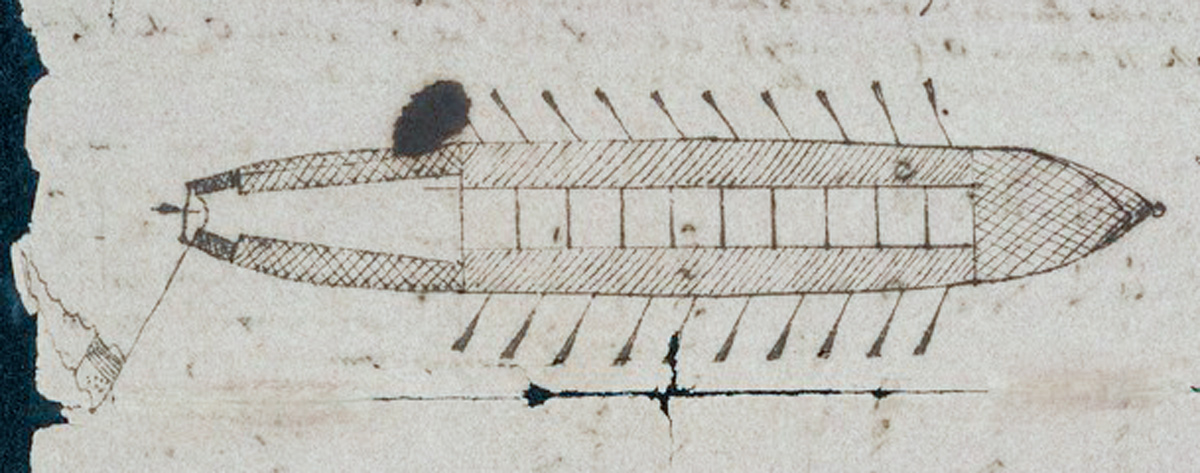From Wood River across from the mouth of the Missouri, Clark sends letters to Lewis who is working in Cahokia. On or near this date, he also plans various configurations for cargo and boat crews.
Cahokia Express
Some Snow, this morning I am verry unwell, to day . . . . (I send off Howrd express to day to Cap Lewis at Koho: [Cahokia] with a Letter
—William Clark
Hunter’s Tally
Winser who was out Last night returned he Killed a Deer & Turkey— Gibson Killed 1 Deer to day, Collons [John Collins] one near Camp
—William Clark
Planning Boat Crews
2 of us 1 sevt 2 intprs = 5
If we take 37 men
The Boat of 25 men 1 Pierogue 6 1 do— 6 37
If the party to consist of 30 men
Boat of 24 men 1 periogue of 6 37
If the Party to Consist of 25 men all in the Boat of 20 ores
If 40 men
Boat of 26 1 Perogue— 8 1 do— 6 40
If 50 men
Boat of 26 1 Perog. 10 1 do 7 1 do— 7 50
—William Clark, undated field note[1]This table has been created from Moulton, Journals, 2:160–61 and Ernest S. Osgood, The Field Notes of William Clark, 1803–1805, Document 7 (New Haven and London: Yale University Press, 1964), … Continue reading
Weather Diary
Therm. at rise
weather wind Therm. at 4 oClock weather wind River fair fair warm Day
—Meriwether Lewis and William Clark[2]To assist the reader, the editor of this web page has omitted the date column, merged the “River” columns, and spelled out some abbreviations.
Experience the Lewis and Clark Trail
The Lewis and Clark Trail Experience—our sister site at lewisandclark.travel—connects the world to people and places on the Lewis and Clark Trail.
Plan a trip related to January 27, 1804:

Winter Camp at Wood River (Camp Dubois) is a High Potential Historic Site along the Lewis and Clark National Historic Trail managed by the U.S. National Park Service. The site, near Hartford, Illinois, is managed as Lewis and Clark State Historic Site and is open to the public.
Old Cahokia Courthouse is a High Potential Historic Site along the Lewis and Clark National Historic Trail managed by the U.S. National Park Service. The site is managed by the State of Illinois and is open to the public.
Notes
| ↑1 | This table has been created from Moulton, Journals, 2:160–61 and Ernest S. Osgood, The Field Notes of William Clark, 1803–1805, Document 7 (New Haven and London: Yale University Press, 1964), 20–21. Table borders and shading have been added for clarity. |
|---|---|
| ↑2 | To assist the reader, the editor of this web page has omitted the date column, merged the “River” columns, and spelled out some abbreviations. |



